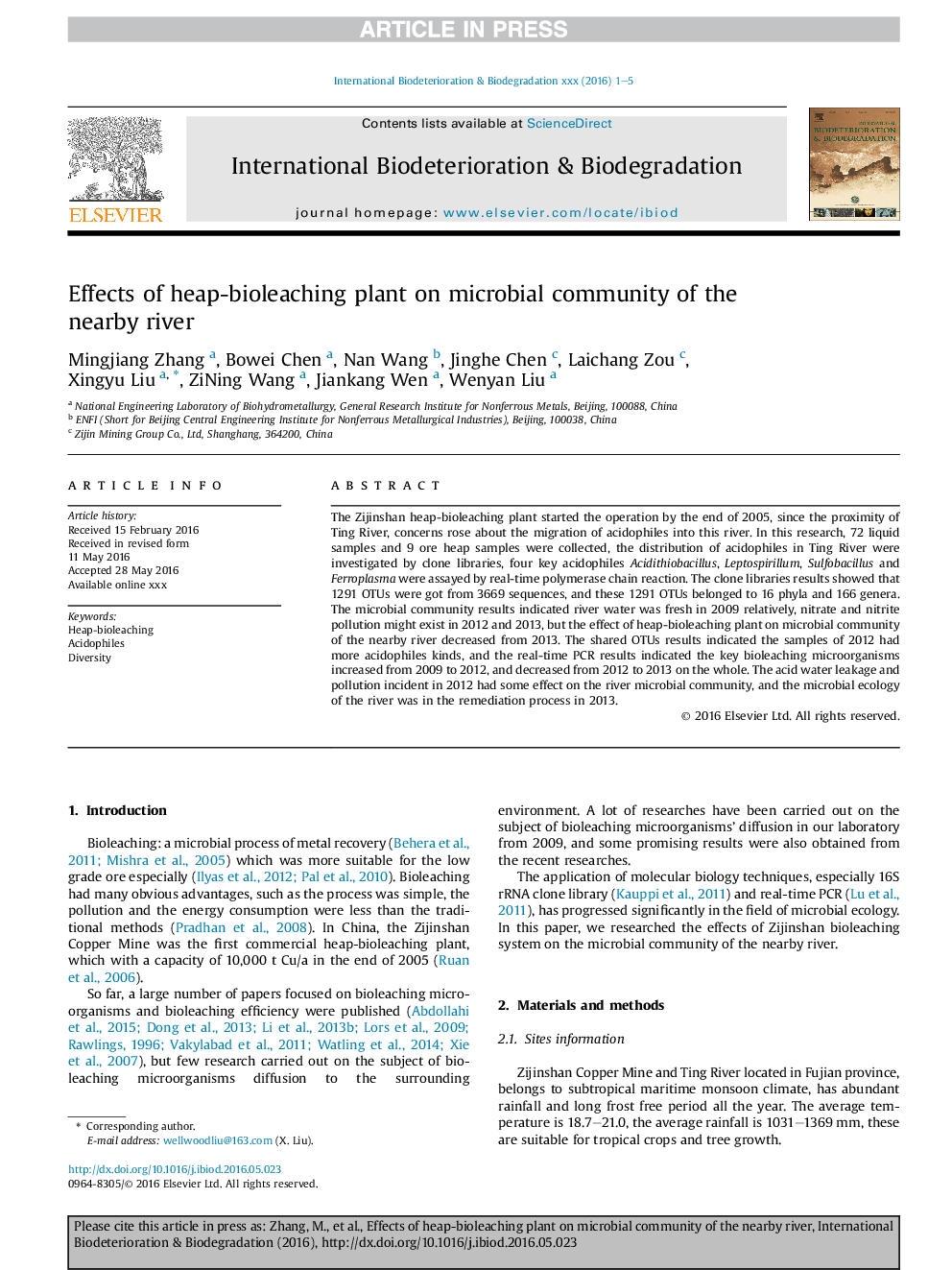| Article ID | Journal | Published Year | Pages | File Type |
|---|---|---|---|---|
| 8843882 | International Biodeterioration & Biodegradation | 2018 | 5 Pages |
Abstract
The Zijinshan heap-bioleaching plant started the operation by the end of 2005, since the proximity of Ting River, concerns rose about the migration of acidophiles into this river. In this research, 72 liquid samples and 9 ore heap samples were collected, the distribution of acidophiles in Ting River were investigated by clone libraries, four key acidophiles Acidithiobacillus, Leptospirillum, Sulfobacillus and Ferroplasma were assayed by real-time polymerase chain reaction. The clone libraries results showed that 1291 OTUs were got from 3669 sequences, and these 1291 OTUs belonged to 16 phyla and 166 genera. The microbial community results indicated river water was fresh in 2009 relatively, nitrate and nitrite pollution might exist in 2012 and 2013, but the effect of heap-bioleaching plant on microbial community of the nearby river decreased from 2013. The shared OTUs results indicated the samples of 2012 had more acidophiles kinds, and the real-time PCR results indicated the key bioleaching microorganisms increased from 2009 to 2012, and decreased from 2012 to 2013 on the whole. The acid water leakage and pollution incident in 2012 had some effect on the river microbial community, and the microbial ecology of the river was in the remediation process in 2013.
Keywords
Related Topics
Life Sciences
Environmental Science
Environmental Science (General)
Authors
Mingjiang Zhang, Bowei Chen, Nan Wang, Jinghe Chen, Laichang Zou, Xingyu Liu, ZiNing Wang, Jiankang Wen, Wenyan Liu,
